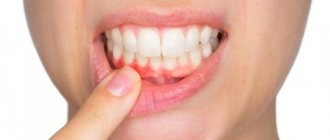August 18, 2017
Tooth extraction is an unpleasant, painful and even frightening procedure. But it seems so only to the patient - for a dental surgeon this is a completely ordinary, everyday and ordinary operation. UltraSmile . ru offers to see what tools the dentist uses to remove teeth. You can also find out ways to restore teeth>>>
Forceps
This is the main device that helps pull the tooth out of the socket. The doctor literally grabs the tooth with forceps and begins to swing it, which leads to the destruction of the ligaments holding the root. Next, the dentist carefully removes the tooth along with the root, again using forceps. The device looks, of course, scary, but not a single dental surgeon can do without forceps. It is noteworthy that such a seemingly simple tool is available in many variations: with inclined, thick or thin, with rounded or even flat nippers (or, in scientific terms, cheeks).
Dental forceps
Elevator
When an impacted or unerupted tooth (most often wisdom teeth) needs to be removed, the dentist will use an elevator. The tool consists of a handle and a working part, which is used to extract the root. The elevator operates on the principle of a lever, that is, the doctor literally picks up the tooth from below and removes it from the bone tissue. Removing teeth using elevators is very traumatic, but in some situations you simply cannot do without them.
Elevator for tooth extraction
Dental instruments for dental treatment
Tools for dental treatment are varied. They differ in names, functional purposes, and the material from which they are made. The choice of the right tools depends on what problem the patient came to the doctor with. The same instruments can be used by a dentist to treat a wide range of diseases.
In addition to the basic set of instruments used in the treatment of diseased teeth, dentistry uses a number of additional devices for carrying out highly targeted actions, for example, prosthetics.
Dental instruments for prosthetics
Prosthetics of any complexity requires an individual approach and takes a lot of time. Each stage of the procedure uses its own set of instruments.
| Name | Photo |
Impression (impression) trays designed for taking impressions from the jaw. They are classified into several main types that are used for taking impressions:
If it is necessary to make an impression of the entire dentition, large spoons are used. For impressions of individual dental units - small. Sometimes, along with standard spoons made in production, the medical technician uses special ones, selected individually. | |
| Burs and discs used for tissue preparation. | |
| Spatulas for stirring solutions. | |
| Devices used for removing, cutting, filing installed crowns. | |
| A micrometer that determines the thickness of the crown. |
Dental instruments for filling teeth
The filling procedure using cement or amalgam requires the use of special instruments, with the help of which:
- The tooth cavity in which the filling will be placed is prepared.
- The future tooth is modeled.
In modern dental practice, the following instruments are used for filling teeth:
| Name | Photo |
| A spatula is a small device in the form of a short flat spatula with a handle. Designed for introducing medication into the dental cavity, forming temporary and permanent fillings, eliminating excess material from which the filling is made. | |
| A spatula is a metal handle with flat elongated blades on both sides. Used in the preparation of pastes for filling canals and medications. | |
| A plugger is a device whose working part is a round, cylindrical or pear-shaped head. It is used to seal the filling in the dental cavity. | |
| An excavator is one of the most common devices in dentistry. It is a handle with sharp spoons along the edges facing in different directions. The main purpose is to remove excess filling material, soft plaque, temporary filling, and tartar. | |
| Handpieces for drills. They secure dental burs and abrasive materials and transmit rotation from the drill. |
During the filling process, not only the main, but also auxiliary devices can be used: matrix holders, channel fillers, strips.
Auxiliary Tools
Forceps and elevators are the main tools of a surgeon. But in addition to them, scissors, scalpels, raspators (thin “spatulas” for separating gums from bone tissue), tweezers, clamps and all kinds of hooks are also used. A chisel (to separate bone tissue and expand the hole if the root is very deep) and a hammer can also be used. Patients are often horrified by the thought of having a chisel manipulated in their mouth, but there is nothing scary about such a procedure. With the right anesthesia, you will not feel anything. In addition, when removing teeth, a drill can also be used - the device will be required if the tooth has several roots and they will need to be separated before removal. This will significantly facilitate the process of extracting the tooth, because the doctor will not extract it entirely, but in parts.
Auxiliary Tools
Laser
The use of laser is one of the greatest achievements of medicine in general and dentistry in particular. In addition to making the dentist’s work easier, the device provides patients with a comfortable procedure and a fairly quick, painless recovery. The laser will not terrify a person, as can happen, for example, with a drill, because it works completely silently.
Laser
In general, in dentistry, lasers are used to treat shallow caries, install implants, treat gums, remove plaque, and even whiten teeth. When applied to the process of tooth extraction, the laser allows for a careful incision of the gums (in this case, the beam stops the capillaries, which means there will be no bleeding and severe trauma to the tissue), a more careful separation of the roots, as well as antiseptic treatment of the wound and restoration of damaged tissue.
Video of wisdom tooth removal using laser
What complications may arise?
- An inflammatory process may develop due to a chronic source of infection, which occurs if the cause of tooth decay is caries. Inflammation of the gums can cause periodontal disease and then the inflamed and infected hole will take a long time to heal.
- If tooth decay occurs as a result of injury , then infection of the wound surface may occur. Therefore, the remainder of the root must be urgently removed, and the damaged socket and gum must be sanitized.
- a pathological process develops due to the presence of part of the root in the thickness of the bone.
Piezo device
Along with a laser, a piezoelectric device is another modern device that makes the dental treatment process more comfortable and safe. The device generates ultrasonic waves that replace a traditional drill. It works almost silently; when removing teeth, it allows you to make incisions in the gums, the teeth themselves, and bone tissue. In this case, the cuts are made using ultrasonic vibrations, and the tip of the device does not come into contact with the surface being treated. Due to this, the tissues are practically not injured, the operation is carried out with high precision even in difficult-to-reach areas.
Piezo device
Ultrasonic tooth extraction
Now you have the opportunity to change your attitude towards visiting the dental office. With the help of a piezosurgical device, it is not painful to remove a tooth for both children and adults. At the branches of the “Doctor Lyutikov Clinic” we offer you services, the quality of which is explained by the high qualifications and experience of our specialists, the use of effective medications and modern equipment, which allows us to carry out all surgical and other operations with minimal discomfort for the patient.
This is interesting: the tools that our ancestors used
It's surprising, but all modern hand tools for tooth extraction have been in use for several centuries. Of course, their ancestors looked very scary, and sometimes a simple operation led to very sad consequences, even death.
One of the first devices for removing teeth were pelicans, so named because of their external resemblance to the bird of the same name. They have been in use since the 14th century. The components of the device were a rotating claw and a base - the tooth was placed between them and twisted out of the hole.
Pelican
Another “torture instrument” of dentists was a special key. A claw was placed at the tip of the shaft, which allowed the tooth to be rotated around its axis. Fortunately, this method has not been used since the end of the 19th century.
Key
A rather unusual instrument is a goat's leg, with a double tip that resembles an animal's hoof. It was used to extract remains of tooth roots.
Goat leg
This is only a small part of the instruments previously used in dentistry. Most of them bear little resemblance to medical devices, causing associations with torture devices. No wonder people were afraid to go to the doctor! Perhaps it was then that a fear of dentists was formed, passed on to modern generations at the level of instinct. However, today there is simply no point in being afraid of dentists. Advanced instruments and devices, together with high-quality anesthesia, make the process of treatment and tooth extraction absolutely painless.
Notice
: Undefined variable: post_id in
/home/c/ch75405/public_html/wp-content/themes/UltraSmile/single-item.php
on line
45 Notice
: Undefined variable: full in
/home/c/ch75405/public_html/wp-content /themes/UltraSmile/single-item.php
on line
46
Rate this article:
( 1 ratings, average: 5.00 out of 5)
removal of a tooth
Consulting specialist
Magadov Roman Vladimirovich
Doctor rating: 9 out of 10 (4) Specialization: Implant surgeon, orthopedist Experience: Notice
: A non well formed numeric value encountered in
/home/c/ch75405/public_html/wp-content/themes/UltraSmile/single-item.php
on line
158
2006 years











